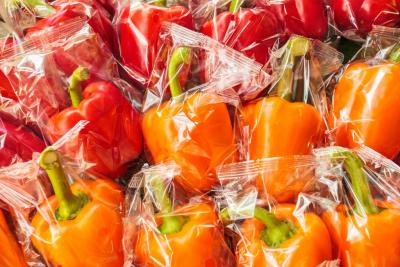

by Alexa Erickson, Collective Evolution
There’s a lot of controversy happening in your kitchen. While we tend to focus on how the foods we eat can work for or against our health, it’s truly so much more than that. How we cook our foods and how we store our foods has a lot of weight on our well-being as well. Plastic wrap, for instance, rose to fame in the 1950s, sold in rolls and used primarily for wrapping food. It’s since become a staple in many people’s kitchens.
For decades there’s been controversy surrounding plastic wrap, but now research is supporting the concerns. For instance, the phthalate chemicals used in the product, were found in a study of nearly 3,000 children in The Journal of Pediatrics to raise levels of blood pressure in children between the ages of six and 19.
“We know that phthalates damage the walls of arteries by oxidative stress and they may directly damage heart cells,” says the lead researcher, Leonardo Trasande from New York University School of Medicine. “We know these chemicals get into food from plastic wrappings and gloves, and that they are in PVC flooring and cosmetics. We think they may have an effect on cardiovascular health and that children and adolescents should have limited exposure.”
Evidence also suggests that heat makes chemicals in plastic wrap, along with other plastic products, leach into food and drink. In fact, heat appears to increase the rate of chemical transfer by up to 55-fold.
The National Institute of Environmental Health Science even recommends consumers avoid microwaving food in plastic containers, acknowledging that heat increases the likelihood of chemical leaching.
“Do not allow cling wrap to come into direct contact with food when heating it,” Cancer Research UK warns.
Prior to 2006, plastic wrap in the United States was primarily made with PVC, which is made from vinyl chloride — a known human carcinogen. Now most brands are phthalate-free, and instead use low-density polyethylene (LDPE) or polyvinylidene chloride (PVDC). However, plastic wraps made with LDPE may contain diethylhexyl adipate (DEHA), which is another potential endocrine disruptor that has been linked to breast cancer in women and low sperm counts in men.
But important to note is that manufacturers aren’t required to list the actual chemical makeup of their plastic wrap on the boxes, so it may be best to avoid all plastic wraps in their entirety.
“If you’re heating a plate in the microwave, just cover it with another plate or a chemical-free paper towel,” suggests Andrea Gore, professor of pharmacology at the University of Austin in the U.S., who has studied the effects of chemicals on reproductive function. “I heat food only in glass or ceramic, and although I use cling film in my fridge to cover cooked food, I remove it before reheating that food in the microwave.”


Comments
We used to live in Japan
We used to live in Japan where the plastic presentation craze took on such an absurd meaning, it turned us off in the late 90s. Perfect looking Apples and other food were lavishly presented with copious amounts of plastic and other presentation gimmicks we instantaneously became weary of plastics. Today, we reuse and wash or plastic bags.
Using plastics the way we have reminds me of a French saying. A person wants wood and climbs on a tree. The person sits on a branch and starts sawing between him and the trunk. The result? The person falls down and hurts themselves. Well, something to that extent :)
As Above, So Below
As Below, So Above